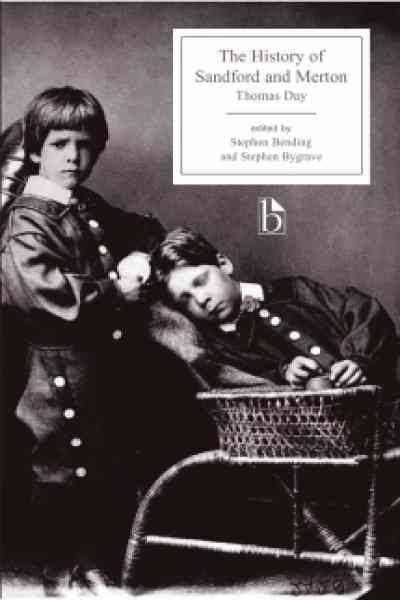 | ||
Similar Thomas Day books, Other books | ||
The History of Sandford and Merton (1783–89) was a best-selling children's book written by Thomas Day. He began it as a contribution to Richard Lovell and Honora Edgeworth's Harry and Lucy, a collection of short stories for children that Maria Edgeworth continued some years after Honora died. He eventually expanded his original short story into the first volume of The History of Sandford and Merton, which was published anonymously in 1783; two further volumes subsequently followed in 1786 and 1789. The book was wildly successful and was reprinted until the end of the nineteenth century. It retained enough popularity or invoked enough nostalgia at the end of the nineteenth century to inspire a satire, The New History of Sandford and Merton, whose preface proudly announces that it will "teach you what to don't".
Despite its title, The History of Sandford and Merton is not a "history" in the modern sense but rather an assemblage of stories Day both wrote himself and extracted from a multitude of sources that is only nominally held together by a thread narrative. The "history of Sandford and Merton" follows the reformation of Tommy Merton who is transformed from a spoiled six-year-old boy into a virtuous gentleman (Day defines virtue as the appreciation of the value of labour). Tommy, having been pampered and indulged by his mother and their slaves in the West Indies, is a proud and ignorant aristocrat; he lacks the sterling qualities of "plain, honest" Henry (Harry) Sandford, the yeoman farmer's son, who becomes his model and mentor in the book. Both are guided by a mentor, Mr. Barlow. Day wanted to emphasize the series of stories he had collected, which ranged from moral tales to scientific lessons to fables, but the book became famous for the story of Tommy and Harry. Many abridgements which appeared after Day's death reflect this interest; they condense the book, remove sections on educational philosophy and highlight the relationship between the two boys. One, for example, was by Lucy Aikin in 1868 as Sandford and Merton: In Words of One Syllable.
The text embodies many of the educational and philosophical tenets espoused by Jean-Jacques Rousseau, whom Day admired greatly. Sandford and Merton was his way of presenting Rousseau's philosophy to British children in the form of fiction. Harry, the farmer's son, "is the personification of Rousseau's ideas... He abjures the decadence of modern life... To the surprise of Tommy Merton and his parents, Harry is unimpressed, and even critical, of their luxuries, their fine food, their many possessions, preferring his own uncomplicated life of hard work, active virtue and simple pleasures." Over the course of the narrative, Tommy comes to appreciate and adopt these values as well.
Legacy
So prevalent was the ideal of the book portraying good morals for children, that Ethel Turner started her book Seven Little Australians with the warning "If you imagine you are going to read of model children, with perhaps; a naughtily inclined one to point a moral, you had better lay down the book immediately and betake yourself to 'Sandford and Merton'..."
